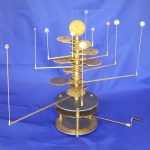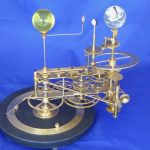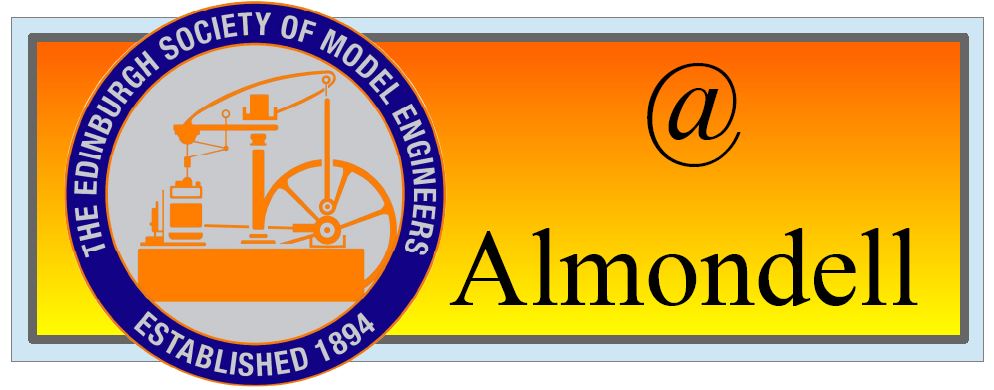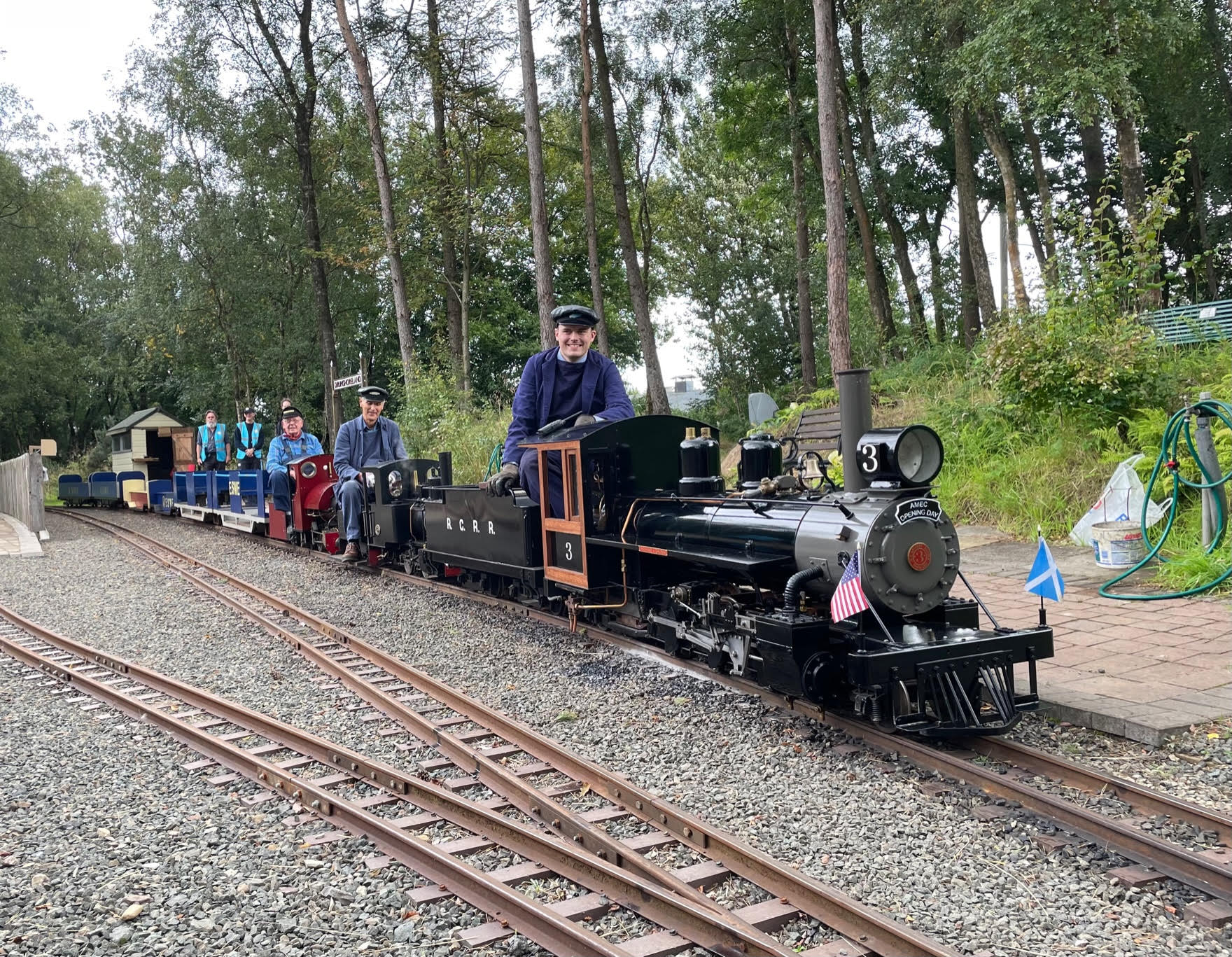Updated 12th August 2023
Great news from Peter.R
I am very pleased to let everyone know that my replica William Pearson orrery that I described some time ago on the ESME website (SEE BELOW) has been acquired by the Royal Astronomical Society for their important collection of astronomical objects. It takes its place amongst a small collection of items such as a Harrison chronometer and telescope by William Herschel, discoverer of Uranus.
Original article below
From South Cheshire, member Peter R. has emailed with a description & photographs of an unusual, but fascinating model he has been working on:
‘Since completing my large two cylinder marine engine a few years ago, I decided to downsize my models since the size and weight of 7¼” locos was becoming too much to handle. Incidentally, the big marine engine is now half way up a mountain in Austria driving a generator for an off-grid chalet!
I turned to designing and building Orreries, machines that reproduce the complex motions of the planets around the Sun, which were first developed some 300 years ago. You will find several original machines in museums around Britain, one of the best is in the Kelvingrove Museum.
Here are two of my earlier designs,
 this one shows the movement of the 8 major planets and 2 minor planets around the Sun
this one shows the movement of the 8 major planets and 2 minor planets around the Sun
 and this one shows the complex motions of the Moon and Earth around the Sun.
and this one shows the complex motions of the Moon and Earth around the Sun.
Having completed a number of such machines, last year I decided to build a replica of one of the original orrery. This particular machine was designed by William Pearson in 1805. William Pearson was a founding member of the Royal Astronomical Society of London, and of the Royal Institution. He designed a number of orreries which represented the state of the art at that time. In the early 1800’s, having completed a machine for the Royal Institution he started work on his masterpiece “Orrery for Equated Motions” which represented the pinnacle of orrery design, surpassing many others in terms of accuracy and simulation of planetary motion.
Unfortunately the machine no longer survives, however the orrery is described by Pearson in a book published in 1805. It is a most sophisticated yet delicate machine, and it is no surprise that it did not survive despite it being an important English-made planetary machine. The machine shows the motion of the elliptical orbits of the Earth and Moon around the Sun. It also incorporates a number dials from which the positions and motions of all the bodies can be read with a high degree of accuracy.
The original machine was very large, to some extent determined by the large range in size of several wheels (gears), varying from very high tooth counts to very low tooth counts. The low tooth count pinions being particularly susceptible to teeth being snapped off if placed under heavy or shock loads. Pearson was evidently aware of this potential problem since he specified a very coarse tooth size for the 269 tooth central contrate wheel and matching 10 tooth pinion. Damage to the pinion could easily be caused by a moderate level of pressure being applied to rotate the main Earth arm. This may indeed be the reason for the machine not surviving.
It was decided to build a half scale replica using modern involute gear profiles (module 0.5) rather than cycloidal profiles. One problem of reduced size was that it would be difficult to fit in the 269 tooth central contrate wheel. I also wanted to increase the number of teeth on the pinions to make it more robust. This was solved by re-calculating the required wheels for the Earth and Moon orbits, while limiting the number of teeth on the central contrate wheel. This was achieved with minimal change in performance, the Earth orbital period and Moon synodic period being to all intents as accurate as Pearson.
Pearson recommended that the 269 tooth central contrate wheel have 5.75 more teeth in the summer half than in the winter half to allow for the elliptical orbit of the Earth, a difficult job for the wheel cutter to achieve. An alternative approach is to offset the axis of this wheel to give the required ratio of teeth, summer to winter and this is what I chose to do.
The only other significant change in the structure is that the 179 tooth wheel driving the Nodes is mounted horizontally rather than vertically as in the original. The reason again is that in the half scale replica there is not sufficient space to mount this very large wheel vertically without destroying the overall proportions of the orrery. In all other respects the replica follows Pearson’s description as given in the book.
The Earth globe is a commercial item, but made in the traditional way with strips of paper like segments of an orange for the map. The sun is a yellow perspex ball and the base I had cut and polished in Welsh slate. Every other part is made from brass or silver steel in the workshop, and the dials I engraved on my small CNC milling machine using a carbide 0.4mm slot drill. The gears are cut on a milling machine with the blanks being mounted on a rotary table driven by a stepper motor. The photo below shows the finished machine.
Best wishes, Peter R.’


